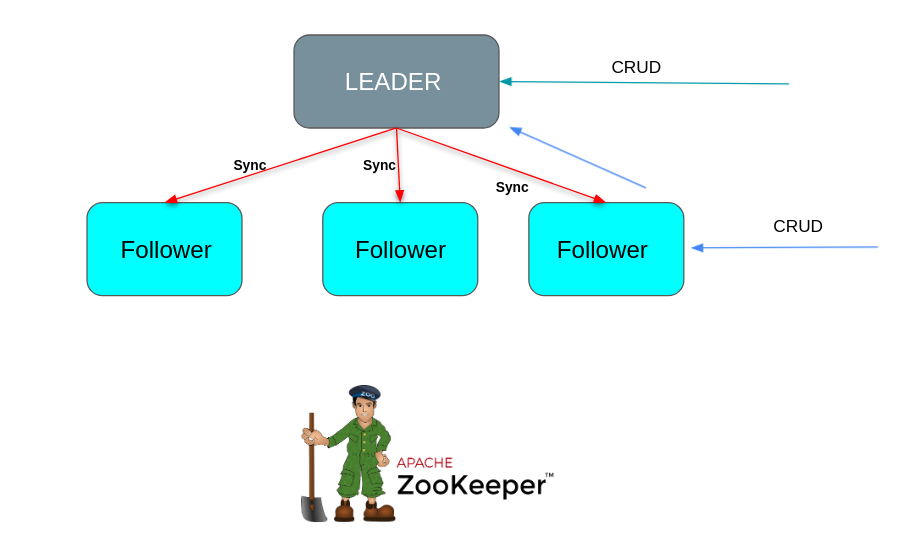Distributed Cache
Implementation of a distributed caching solution (LRU : Least recently used) using ZooKeeper.
Getting Started
Build the docker image by running the following command :
docker build image . -t zcache
Then run the container by running the following command :
docker container run -p 9999:9999 -e ZOOKEEPER_HOST=zookeeper_url -e NODE_ID=1 -e CACHE_CAPACITY=1000000 zcache
Note that :
- Each instance must have a unique NODE_ID !!
- If the environment variable CACHE_CAPACITY is not mentioned the default value would be 1000000
- If you are running Zookeeper locally using docker, do not forget to use the same network
--network your_zookeeper_network
Quorum
To avoid split-brain problem it's essential to avoid multiple leaders getting elected. So an odd number of servers allows ZooKeeper to perform majority for leadership. If 2n + 1 is the number of servers, at any time there can be up to n failed servers and ZooKeeper cluster will keep quorum.
ZooKeeper
Leader Election
Doing leader election with ZooKeeper is very simple. A simple way of doing that is to use the sequence & ephemeral flags when creating znodes that represent proposals of clients. The idea is to have a znode, say /cache-election, such that each znode creates a child znode cache-election/p-0000X With both flags sequence and ephemeral.
With the sequence flag, ZooKeeper automatically appends a sequence number that is greater than any one previously appended to a child of /cache-election. The instance that created the znode with the smallest appended sequence number is the leader.
Service Discovery
At the same time, we're using ZooKeeper as Service Discovery using Spring Cloud Zookeeper that leverages this extension for service registration and discovery.
Consistency vs Availability
Note that according to the CAP theorem, ZooKeeper is a CP system. This implies that it sacrifices availability in order to achieve consistency and partition tolerance. In other words, if it cannot guarantee correct behaviour it will not respond to queries.
Using a Service Discovery with a CP system is not a good idea, so it might be better if we use Eureka (which is an AP system) as a service discovery/registry instead of ZooKeeper (to guarantee availability) but in this case we'll need to set up another cluster.
Endpoints
CRUD operations
Health check API
Guarantees
- Scalable scale out easily together with increasing number of requests and data.
- Highly Available Survives hardware/network failures (Replication + Leader Election)
- Highly Performant fast puts, gets, deletes, and fast evacuation of least used elements.
Author
- Zakaria Maaraki - Initial work - zakariamaaraki



